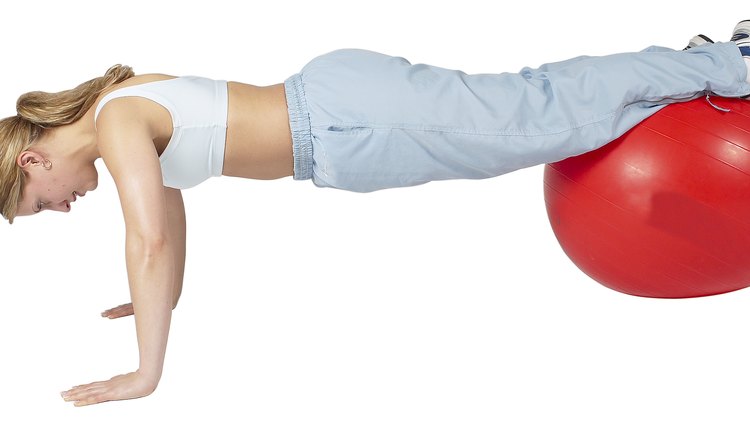How to Get Stronger for Stunting in Cheerleading

Cheerleading is known for wowing the crowd with its dynamic and high-flying stunts. The athletes which execute those stunts are known as stunt groups and usually consist of four bases that lift or throw one top person into the air. Basing is a difficult task and puts a lot of strain on the body. Bases must develop the strength needed to lift and hold the top person at arm's length above their heads and hold them there for extended periods of time. They must also possess the power to throw a top person to heights of sometimes 20 feet in the air. Stunting requires upper body, lower body, and core strength as well as power, all of which can be developed through sport-specific training. Exercises to build strength and power for stunting should mimic the execution of stunts as closely as possible to develop those muscles. It is important that bases have the adequate strength to lift primarily with their legs and arms to protect their backs from injury.
Upper Body Conditioning
Stunting requires a great deal of upper body strength. An effective upper body conditioning program will include exercises to strengthen the arms, shoulders, chest and back. Strong arms help to stabilize stunts while they are extended overhead. Exercises which mimic stunting would include those which lift weights above the head originating from the shoulders. Good examples of these types of exercises include push-ups, pull-ups, triceps dips, handstand shoulder shrugs, overhead presses and planche drills.
Lower Body Conditioning
The thrust used in stunting to lift a top person off of the ground is a result of tremendous strength in the legs, particularly the thighs. In addition to providing strength for stunts, the muscles of the thigh lessen wear and tear on the joints of the knees, reducing the likelihood of overuse injuries. An effective lower body conditioning routine should include exercises such as mountain climbers, calf raises, squats, wall sits and squat jumps.
Core Conditioning
Core muscles are especially important in stunting. By strengthening their abdominals and lower backs, bases can prevent strain and injury while lifting. Strong core muscles allow bases to stay tight and controlled while lifting; they stabilize the spine, pelvis and shoulder girdle. The core muscles also aid in balance. Equipment, for example medicine balls, stability balls, and balance boards, may be used when performing core exercises. A core condition routine would include exercises such as prone bridges, lateral bridges, crunches, sit-ups and back extensions.
Power Training
Power is essential in stunting. An athlete may be remarkably strong, but lacking in the ability to apply that strength quickly. Power training allows an athlete to exert their maximum amount of strength in a short period of time. Power is especially important in stunts which involve throwing the top person, for example cradles and basket tosses. Exercises which help to develop power vary greatly, but can be divided into three categories: quick succession weight lifting— where a light weight is repeatedly and quickly lifted; ballistics— where the force applied outweighs the resistance, such as in throwing a medicine ball or performing jump squats; and polymetrics— such as jump training and upper body drills with a medicine ball.
References
Writer Bio
An American writer living in the United Kingdom, Christy Mitchinson began writing professionally in 2000, during her career in laboratory science, pathology and research. She has authored training materials, standard operating procedures and patient/clinician information leaflets. Mitchinson is pursuing a Bachelor of Arts in English literature and creative writing with The Open University.
